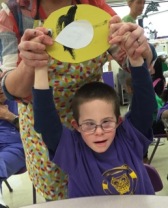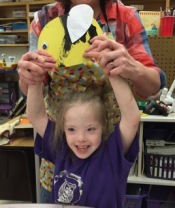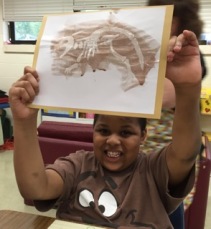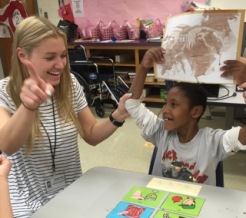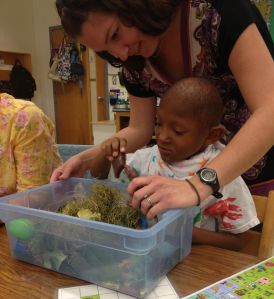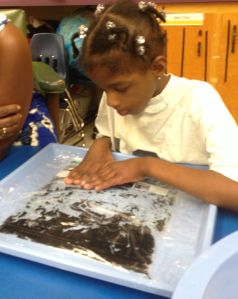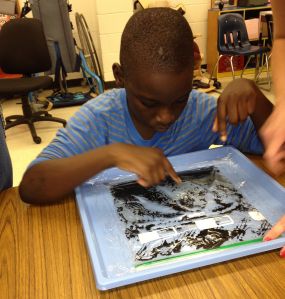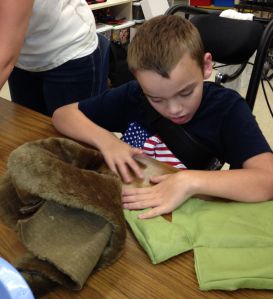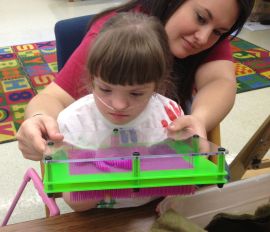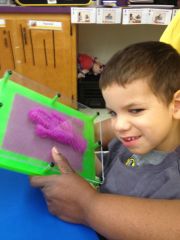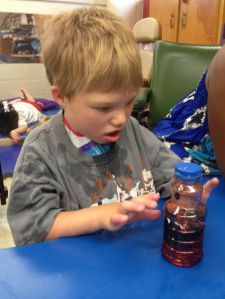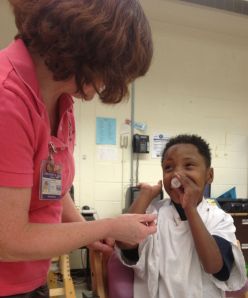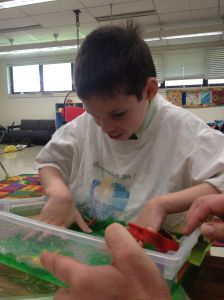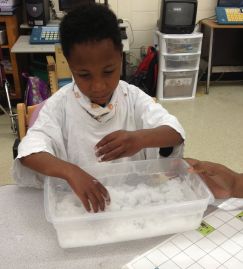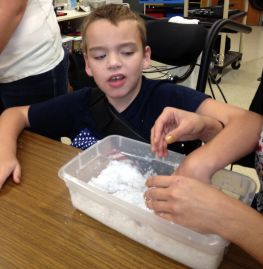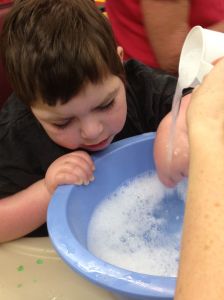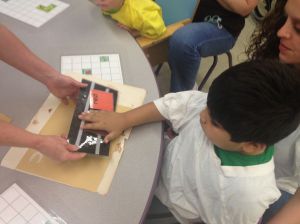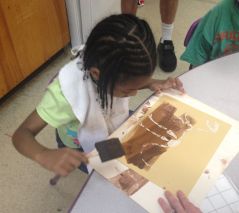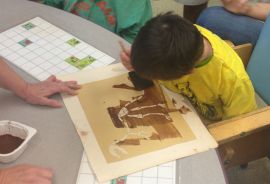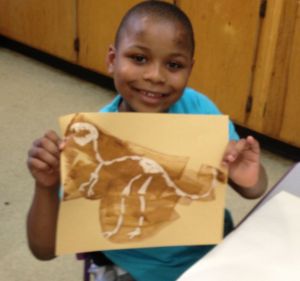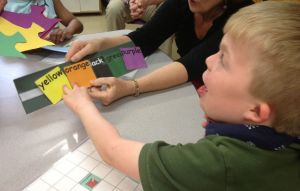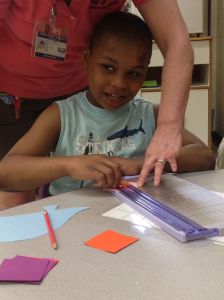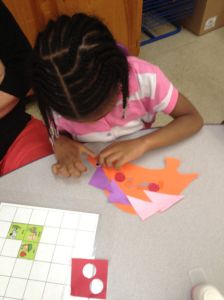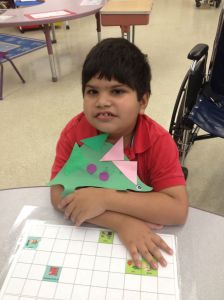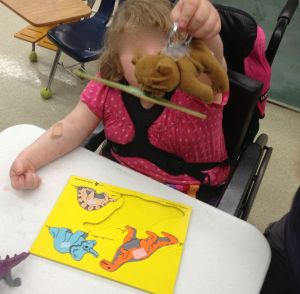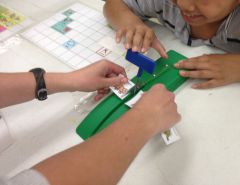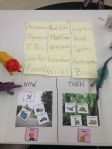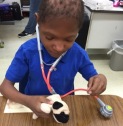 This week our theme compliments the April Unique Curriculum unit for our students. They are learning about money and what we do with it. Our focus is on how we earn it! The sensory groups explored boxes related to specific jobs. The fine motor groups painted job related art projects and the language group got real time job experience—–they made a dessert 🙂
This week our theme compliments the April Unique Curriculum unit for our students. They are learning about money and what we do with it. Our focus is on how we earn it! The sensory groups explored boxes related to specific jobs. The fine motor groups painted job related art projects and the language group got real time job experience—–they made a dessert 🙂
SENSORY GROUP
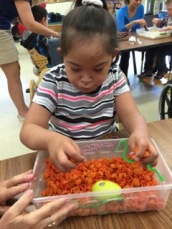
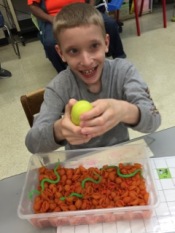 Helping people get an education as the President of a University would be a pretty important job to have! If you were the president of FAMU you would cheer on the Rattlers. Our box featured the team colors of ORANGE and GREEN and the little egg shaker we included made rattling sounds when shaken.
Helping people get an education as the President of a University would be a pretty important job to have! If you were the president of FAMU you would cheer on the Rattlers. Our box featured the team colors of ORANGE and GREEN and the little egg shaker we included made rattling sounds when shaken.
The science access point recognize objects that create sounds can be addressed here.

 Paleontologists study dinosaur bones—–how cool is that! There were four little bones to find buried in our sand and we included a small scoop so they could be buried again. Of course it was also really fun to watch the sand sift through fingers. This box was lots of fun 🙂
Paleontologists study dinosaur bones—–how cool is that! There were four little bones to find buried in our sand and we included a small scoop so they could be buried again. Of course it was also really fun to watch the sand sift through fingers. This box was lots of fun 🙂
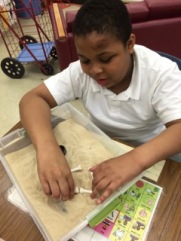 Apply a push to move an object is a science access point.
Apply a push to move an object is a science access point.
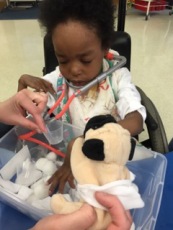
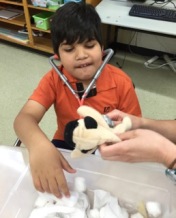 Veterinarians take care of our pets. There were lots of “medical” supplies in this box for fun pretend play. There were soft cotton balls and gauze as well as a fun stethoscope to try out. Our little vets took good care of their patient!
Veterinarians take care of our pets. There were lots of “medical” supplies in this box for fun pretend play. There were soft cotton balls and gauze as well as a fun stethoscope to try out. Our little vets took good care of their patient!
Recognize a model of a real object is a science access point.
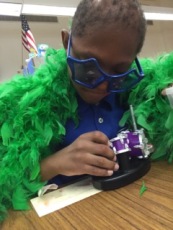
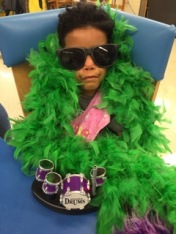 One really cool way to earn money would be as a Rock Star! In addition to finger drums and a tiny toy guitar, there were some star worthy sunglasses and feather boas in this box.
One really cool way to earn money would be as a Rock Star! In addition to finger drums and a tiny toy guitar, there were some star worthy sunglasses and feather boas in this box.
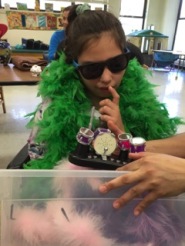 The science access points recognize objects that create sounds and the science access point recognize one or more external body parts can be addressed with this activity.
The science access points recognize objects that create sounds and the science access point recognize one or more external body parts can be addressed with this activity.
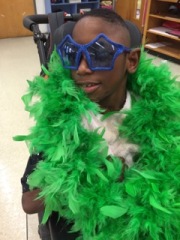
 Everyone got in on the fun……..
Everyone got in on the fun……..
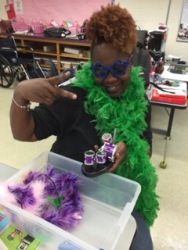 …..looks like we have some future superstars in the making 🙂
…..looks like we have some future superstars in the making 🙂
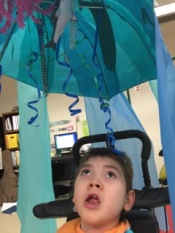
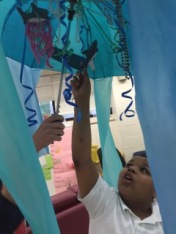 We brought out our underwater umbrella for our budding Marine Biologists. To add to the experience there were orca and humpback whale sounds recorded on a voice output device. Everyone found it fascinating!
We brought out our underwater umbrella for our budding Marine Biologists. To add to the experience there were orca and humpback whale sounds recorded on a voice output device. Everyone found it fascinating!
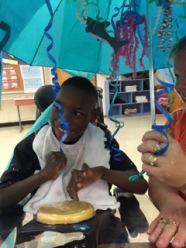 Match living things with their habitats is a science access point that can be addressed here.
Match living things with their habitats is a science access point that can be addressed here.
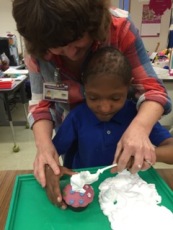
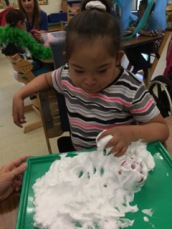 Our little Chefs had fun icing the play food cupcake with whipped (shaving) cream. Great messy fun!
Our little Chefs had fun icing the play food cupcake with whipped (shaving) cream. Great messy fun!
Recognize that pushing and pulling an object makes it move is a science access point.
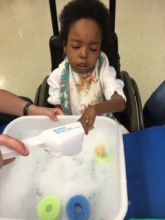
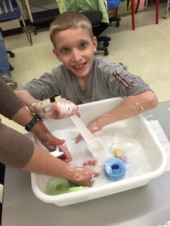 Our students got to play Lifeguard by scooping swim rings (made out of water noodle slices) and a little toy figure out of the water. This activity is great for counting and eye hand coordination practice!
Our students got to play Lifeguard by scooping swim rings (made out of water noodle slices) and a little toy figure out of the water. This activity is great for counting and eye hand coordination practice!
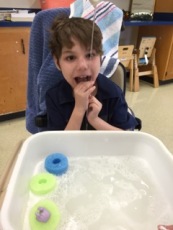 Recognize 2 dimensional shapes in the environment is a math access point.
Recognize 2 dimensional shapes in the environment is a math access point.

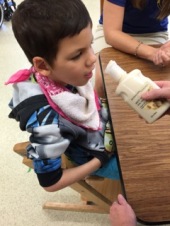 We chose Bath and BodyWorks vanilla sugar scent for our water play and lotion this week because the aroma reminded us of some of the yummy treats that Chefs might make! This is always a popular scent with our students 🙂
We chose Bath and BodyWorks vanilla sugar scent for our water play and lotion this week because the aroma reminded us of some of the yummy treats that Chefs might make! This is always a popular scent with our students 🙂
Recognize and respond to one type of sensory stimuli is a science access point.
FINE MOTOR GROUP
On Tuesday we talked about Beekeeping and our students made some bees using this: honey bee template We used yellow poster board for the base so it was a little sturdier and just regular white paper for the wings.
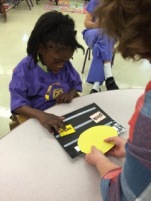
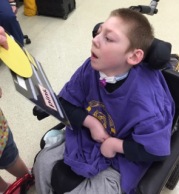 We started by discussing the shape of the bees body—-an oval—-and asked the students to identify the color yellow using communication symbols.
We started by discussing the shape of the bees body—-an oval—-and asked the students to identify the color yellow using communication symbols.
Identify objects by one observable property such as size or color is a science access point.

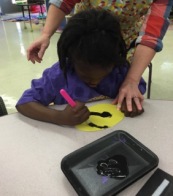 Next the students painted black stripes on their bee.
Next the students painted black stripes on their bee.
Recognize that the appearance of an object or material has changed is a science access point.
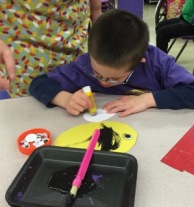 Then they used a glue stick to apply glue to the wing and put it on their bee. We encouraged them to put the wing DOWN onto the bee’s body.
Then they used a glue stick to apply glue to the wing and put it on their bee. We encouraged them to put the wing DOWN onto the bee’s body.
Recognize a movement that reflects a spatial relationship, such as up and down is a math access point.
 With a little help they added a googlie eye by placing in ON a glue spot.
With a little help they added a googlie eye by placing in ON a glue spot.
The math access point match one object to a designated space to show one-to-one correspondence is addressed here.
On Wednesday like Paleontologists, we discovered some dinosaur fossils! To prep this an adult traced this: dinosaur bones template Instead of making copies of our template, we took another piece of paper to trace over it with a pencil and made copies of that. By doing it that way the outline was very light. One of our fantastic volunteers then filled in each template with glue—-all 7 of them! She used a paint brush and it actually went really fast!
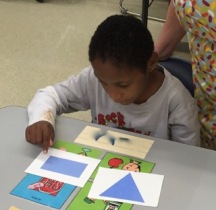
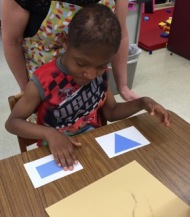 The students identified the shape of the paper using communication symbols—-they did a really great job and we were SO proud 🙂
The students identified the shape of the paper using communication symbols—-they did a really great job and we were SO proud 🙂
Recognize 2-dimensional shapes in the environment is a math access point.
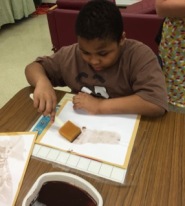
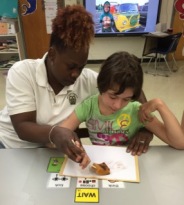 Then they dipped their sponge brushes into VERY watery brown paint. You need your paint to be pretty translucent for this project to turn out correctly. As the students brushed the paint over the paper, their fossils appeared—–this was super cool!!!
Then they dipped their sponge brushes into VERY watery brown paint. You need your paint to be pretty translucent for this project to turn out correctly. As the students brushed the paint over the paper, their fossils appeared—–this was super cool!!!
Recognize that the appearance of an object or material has changed is a science access point.
LANGUAGE GROUP
We tied in a couple of the jobs we talked about in our book because we made an edible treat (chef) with honey (beekeepers)!
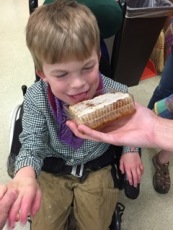
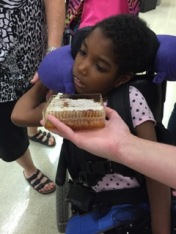 We started by going around the room and letting our students look at and smell some real honey comb that Joy brought it. We talked about how it smelled SWEET. We also talked a lot about looking with our eyes and smelling with our noses, not with our hands!
We started by going around the room and letting our students look at and smell some real honey comb that Joy brought it. We talked about how it smelled SWEET. We also talked a lot about looking with our eyes and smelling with our noses, not with our hands!
Recognize and respond to one type of sensory stimuli is a science access point.

 Next, we counted out cups for all of our friends. Each of our students got to indicate how many spoonfuls of vanilla yogurt they wanted by pointing to the numbers 3, 4, or 5. When scooping out the yogurt, we counted out loud to make sure that we put in the correct amount.
Next, we counted out cups for all of our friends. Each of our students got to indicate how many spoonfuls of vanilla yogurt they wanted by pointing to the numbers 3, 4, or 5. When scooping out the yogurt, we counted out loud to make sure that we put in the correct amount.
Associate quantities with number names is a math access point.

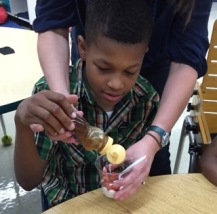 Our students then got to indicate if they wanted strawberries on top by verbalizing yes/no or by nodding/shaking their heads.
Our students then got to indicate if they wanted strawberries on top by verbalizing yes/no or by nodding/shaking their heads.
Once the strawberries were in, our students helped SQUEEZE the honey onto their yogurt and strawberries. Finally, we topped the mix with some granola.
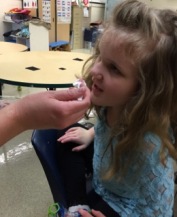
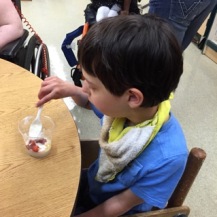 We think this job was a successful one for our students!
We think this job was a successful one for our students!
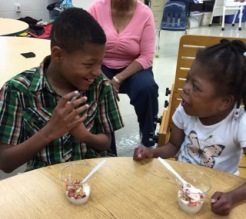 They thought it was a pretty a delicious one as well 🙂
They thought it was a pretty a delicious one as well 🙂
We had an absolute blast this week! Join us again next time for more fun and learning—–Group by Group!
